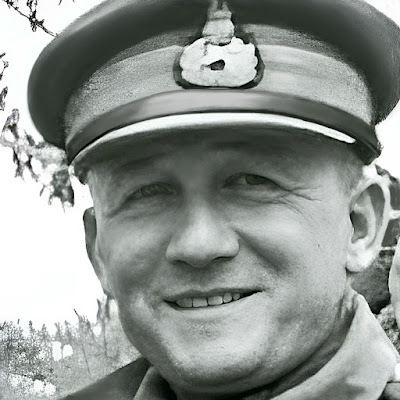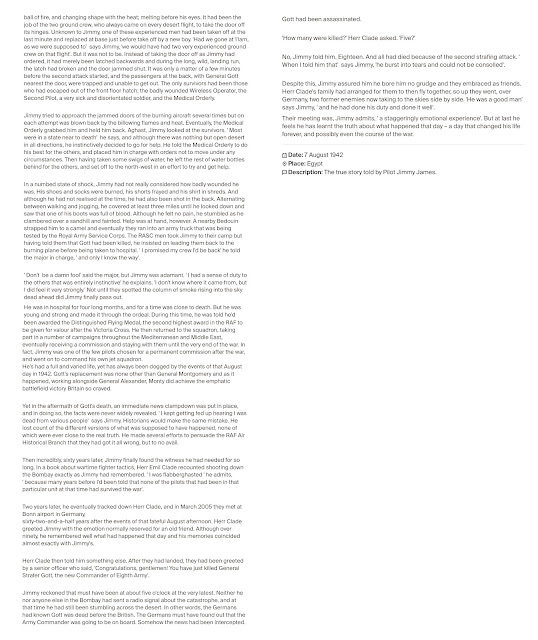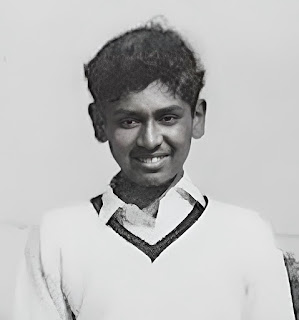CHARNEY HALL Lt General W H E Gott CB CBE DSO(bar) MC
12 Feb 2025 : Post updated - 1917 War Diary (transcript added)
W H E Gott aged 24
Benjamin Gott started life as a woollen merchant but his entrepreneurial spirit foresaw the shortfall in woollen manufacturing facilities in the Leeds area. He commissioned the rebuilding of the ruinous, fire damaged Armley Mills, which became the largest weaving factory in the world. He was also responsible for the construction of Bean Ings (1792) the first wool factory, and acquired Burley Mills (1798) and St Anne’s Mills (1824).
His subsequent wealth enabled him first to lease then to purchase Armley House which is now let by the Gott Family Trust to Leeds City Council on a long lease and has been run as Gotts Park Golf Club since 1933.
Like many former Charney Hall boys William appears to have had a secure financial foundation to his education, provided for him by his parents. The journey to Grange-over-Sands, well in excess of 100miles, must have been daunting on the roads of the day, the most direct route being via York, Harrogate, Skipton and Kirby Lonsdale. The alternative, perhaps a more convenient way, bearing in mind the unreliable temperament of early motor cars, the availablity of mechanical assistance should things go wrong and the condition of road surfaces, would have been to travel by steam train.
Even in my grandfather’s day the steep climb out of Settle named Buckhaw Brow, pronounced ‘Bukka’ Brow by the locals, was a supreme test of a car’s horsepower and torque. Many would have to offload their passengers who would then have to ignominiously push the automobile up to the top of the incline.
Purely by circumstance William chose a path in life, not uncommon in those days. However the level of attainment and stratospheric rise through the ranks during WWII was perhaps unique in the annals of Charney Hall through his choice of career in the armed forces.
I’m sure that careers masters did not exist when William attended Charney Hall in the years 1907-11, duly recorded in the school lists. In the 1950s there was more concern about passing the entrance examination to one’s chosen public school than any particular calling thereafter. His parents would most probably have had the traditional preferences of taking up the cloth or gown or Sandhurst and the armed forces. William Henry Gott was a brigadier and his future father-in-law was Brigadier General Walpole Swinton Kays of Firgrove House, Farnham so perhaps his choice was somewhat limited…
However, far from ‘sitting back on his laurels’ William progressed through Sandhurst, WWI, having been wounded, held as a prisoner-of-war and awarded the Military Cross in 1920 (some say he should have received the VC), languished in India in the inter-war period but where ‘he enjoyed polo…’ (1934-38), but then, in 1939, with little notice, dropped into the hellhole of the Sahara desert as a Lieutenant Colonel where he thrived.
Whilst overcoming my annoyance for the fact that Charney Hall is hardly ever mentioned in any of the references made concerning the subject of study, and that in William’s case, Harrow School is, I have to conclude that perhaps Charney Hall made very little difference to William’s character or career! However unbeknown to them at the time many of this generation of schoolboys were soon to die in their late teens/early twenties in the fighting in France in WWI or later in the countless conflicts of WWII. They were prepared to answer the call and to pay the price and perhaps their schools, both prep and public, laid down the principles which equipped them with the courage, conviction and commitment to make the ultimate sacrifice. We will never know, but we should never forget them. William was to die at the age of 44yrs.
There is so much written about William Henry Ewart Gott that I have for the most part confined my contribution to sourcing references and improving/enhancing the photographs available on the internet. My main aim was to explore his character with reference to the opinion of his peers and the citations accompanying his medals and the second was to find an accurate account of that fateful day on 7th August 1942.
Gott's first major action in the North African Campaign was during Operation Compass, a British offensive in December 1940 that resulted in the destruction of the Italian Tenth Army.
Gott was also to command the 7th Armoured Division, a mobile force known as the ‘Desert Rats’ who played a key role in operations.
In April 1941, the German Afrika Korps under Erwin Rommel arrived in North Africa and turned the tide of the war. Gott was given command of the XIII Corps, and he led his troops in a series of battles against Rommel. He instilled enormous loyalty and admiration from his men - an essential attribute of great leaders.
In May 1942, Gott was promoted to command of the Eighth Army, the British force in North Africa. However, he was killed on 7th August 1942 in an air crash just days after taking up his new appointment.
Gott's contribution to the North African Campaign was significant. He was a skilled and innovative commander who helped to turn the tide of the war against Rommel. His death was a major blow to the British forces. Thereafter Lieutenant General Bernard L Montgomery would be appointed by Churchill to command the Eighth Army.
There was some disagreement about the suitability of William Gott to take up command of the Eighth Army both at the time by some of the high command and in subsequent years by the historians.
Some would say that Gott was promoted beyond his abilities as a leader. Others were certain that the war would have been prolonged had he lived and that Montgomery was really the preferred choice.
There was also an unconfirmed rumour that the Germans had prior knowledge to Gott’s flight to Cairo and that it was their intention to assassinate him. The Messerschmitt 109s’ thorough straffing of the crashed Bristol Bombay would indicate that there had been an order to leave no one in the wreckage alive.
It has been suggested that an unnamed American General who was monitoring movements of the British Army from Italy inadvertently passed on critical information to the Germans who had intercepted his wired reports back to America. It is noteworthy that he was subsequently recalled back to the United States after the death of ‘Strafer’ Gott…
https://en.wikipedia.org/wiki/William_Gott
https://www.keymilitary.com/article/churchills-general
A good reference to Gott’s character - though I’m still not sure that CH had any part in it - and the action he saw
https://podcasts.apple.com/gb/podcast/the-battle-of-mersa-matruh/id493253759?i=1000589519922
The History of WWII Podcast by Ray Harris jr. EPISODE 396 - The Battle of Mersa Matruh



























Comments